Excerpt: Digital Leapfrogs by Vijay Mahajan
The increasing use of social media means that anyone, no matter where they live, has a voice and an outlet. Social media platforms connect the Agra matron with the village farmer and the taxi driver with the housekeeper. Sitting in Austin, I could witness through the Internet people helping each other during the monsoon floods in Mumbai just as easily as I could follow Houston residents, just three hours away, doing the same thing on the same social media platforms during a hurricane.
As of January 2020, about 400 million Indians used social media sites, an increase of 48 per cent from just nine months earlier, according to the Digital 2020: India report from We Are Social and Hootsuite. About 29 per cent of the country’s population used social media at least once a month, the report said. The average user has about ten different social media accounts and spends about two hours and twenty-four minutes on them each day. YouTube was the most popular site, the report found, although Facebook and its WhatsApp chat platform both followed closely behind
YouTube’s popularity should come as no surprise, given the growth of smartphones and data connections in India. As of December 2019, roughly 75 per cent of all the web pages served to browsers in India went to mobile phones, according to the Digital 2020: India report. While the report didn’t note as much, it’s likely that an even greater share of social media activity went through mobile phones as well. Whether uploading a quick video or watching a Bollywood classic, YouTube’s growth partly fed off consumers’ readily accessible smartphone screens and cameras. Songs and movies dominated YouTube search terms throughout 2019, the report said — a fact that fit well with my observations.
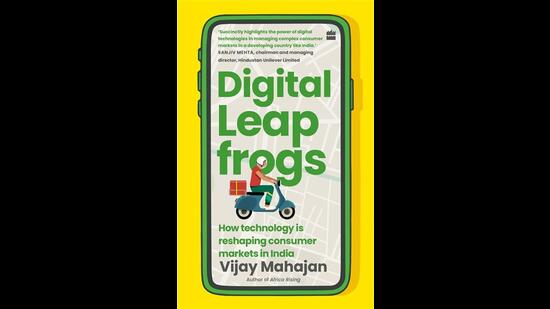
For example, my driver in Delhi regularly used YouTube on his phone to watch music videos or movies during my meetings, and he explained how he could save money by downloading movies overnight so that he didn’t have to burn his data usage during peak daytime periods.
I’ve found YouTube to be an indispensable link to Indian culture, like Netflix. Whether streaming yoga classes or watching the funny videos my siblings share with me, I find it to be one of the quickest and easiest ways to get a ‘dose of India’ in Texas. …
This kind of easy access, rich multimedia immersion and connection to people around the world will maintain YouTube’s popularity for years to come. Yet, in India, the increasing spread of smartphones and digital connectivity has had an even bigger impact on other apps. While YouTube was the second or third most-visited website in the country at the time, depending on which web research firm you consult, it did not rank among the top ten mobile phone apps by active users, according to App Annie’s State of Mobile 2021 report. Although video streaming services saw a surge in usage during the Covid-19 lockdowns, no app exemplified the reach and the democratization of mobile information sharing in India better than WhatsApp, which Facebook acquired in 2014.
Table 5.4: Top Ten Apps by Monthly Active Users (2020)
Mobile Phone App Name Company
WhatsApp Messenger Facebook
Facebook Facebook
TrueCaller Truecaller
Facebook Messenger Facebook
Amazon Amazon
Instagram Facebook
MX Player Times Group
Tez (now GPay) Google
Hindi Keyboard ClusterDev Technologies
Paytm One97 Communications
Source: App Annie, The State of Mobile 2021, available at https://www. appannie.com/en/go/state-of-mobile-2021/
Facebook keeps count of WhatsApp users close to the chest, but in 2019 a company spokesperson confirmed that the service had 400 million monthly active users in India alone — by far its largest market and roughly double its user base from two years prior. While some users have sought out alternative messaging apps due to privacy concerns, WhatsApp does not yet have a serious competitor in India… a big part of its popularity stems from the fact that people can use WhatsApp interfaces on almost any kind of mobile device. For example, WhatsApp developed a version compatible with KaiOS, a mobile operating system for feature phones that effectively transforms them into smartphones. KaiOS was preloaded on millions of JioPhones that sold in India, allowing Jio users to send texts, pictures, videos and voice messages, just as they could with WhatsApp on a smartphone. WhatsApp requires little more than a connection and a minimal data plan, and it’s free — all contributing reasons for its ubiquitous presence in India.
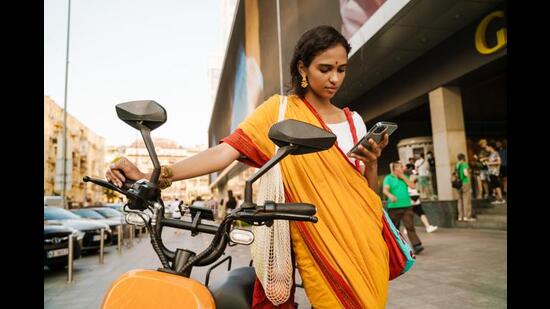
This widespread use has had some remarkable effects on Indian culture… The farmers and homemakers who grow and prepare food rarely have a formal education, so they pass down much of the country’s famed culinary traditions through spoken word, rather than written recipes. So WhatsApp developed a way for people to share and codify their knowledge. Mothers and daughters could exchange recipes on the app, perhaps through sound bites, photos or videos of the onions sizzling in a pan along with their written instructions. But WhatsApp didn’t just build a foodie community, it launched some commerce as well. Home cooks within the same apartment complex started buying and selling their sambars and vadas to each other. Farmers shared their agricultural knowledge with other farmers and then sent pictures of their ripe mangoes to potential buyers.
In fact, WhatsApp became an increasingly vital digital platform upon which technology startups and everyday small businesses could find, reach and build new markets. The same WhatsApp chat groups that link friends, families and hobbyists increasingly linked small-business owners, entrepreneurs and farmers as well. Users and entrepreneurs soon began to envision their own market opportunities in that massive user base. So WhatsApp moved quickly to position itself as a business-friendly platform, including with the 2018 launch of its WhatsApp Business service. Merchants could use a business account, also free, to create catalogues that highlighted their products and services and allowed them to connect directly with customers on WhatsApp. Meanwhile, WhatsApp Business would make money from companies that chose to integrate their systems directly with the platform, allowing merchants to send notifications and handle customer questions seamlessly, directly through WhatsApp itself.
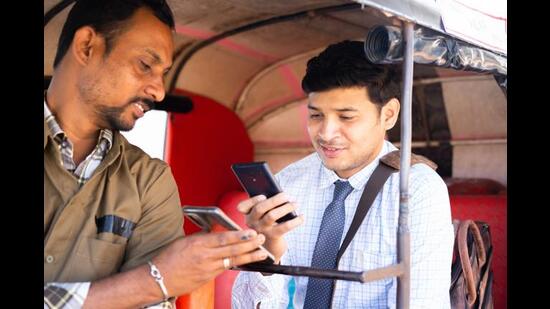
The company’s new digital payments venture could take the innovation and digital commerce on its platform to a whole new level. The company officially launched WhatsApp Pay in India towards the end of 2020, as I was wrapping up work on this book, so its long-term impact remains to be seen. However, given its ease of use and the huge consumer and merchant communities on WhatsApp, I find it hard to imagine that the digital payments service won’t rapidly expand… Initially approved for up to 20 million users on India’s UPI, WhatsApp Pay will have to carve out space in an increasingly crowded and heated marketplace for digital payments and financial services.
For all the many benefits of WhatsApp and similar services, I would be remiss if I didn’t also note some of the dangers inherent in today’s social media platforms. Just as factions in the US used social media platforms to stoke divisions and violence, people have used WhatsApp to coordinate and foment mayhem in India. For example, as Covid-19 spread through the country in 2020, so did misinformation on WhatsApp about the disease and its treatment, including claims that rasam, a type of lentil soup, could cure the virus. While Facebook and other social media platforms also contend with ‘fake news’, the problem is particularly pernicious on WhatsApp because of one of the app’s chief draws — its privacy. Because it is encrypted from end-to-end, numerous invisible networks can freely circulate misinformation. Under pressure from the Indian government, WhatsApp has reined in some of the less savoury activities by limiting the size of chat groups, thereby reducing the number of forwarded messages and deleting suspicious or illicit accounts.
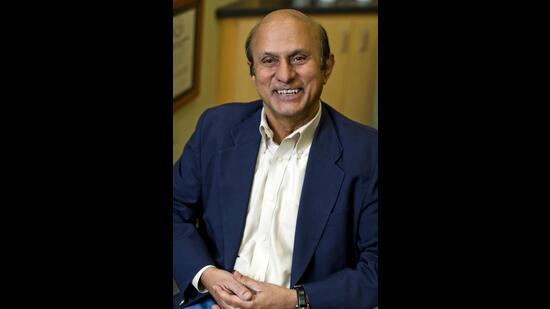
Best of Both Worlds: Merging the Digital and Analogue Experiences
I was reminded of the ways that technology is increasingly woven into the lives of successive generations during my 2018 visit to Delhi. Dan and I would dine at our hotel’s restaurant almost every evening after our days of interviews and market visits. For most of those dinners we had the same waiter, who would say that he’d served guests at the hotel for twenty-seven years. His wife was a schoolteacher. His daughter wanted to become a doctor and had just taken the entrance exam for medical school, and his son had started a production company and animation studio. One evening, after I’d told him about the work we were doing, he handed me his son’s business card. One of his projects included creating YouTube videos of his mother as she cooked some of the family’s favourite dishes. They called the show ‘Prem Ki Rasoi’— which may be translated as ‘Kitchen of Love’.
When I reflected on our conversation with the waiter and watched some of his son’s videos on YouTube, I was struck by the ways digital technologies could complement and extend the physical, real-world connections we build with our friends, family and community. Even as technology changes the way we live and communicate, the underlying messages we transmit through those digital bits and bytes remain very much the same. All mothers, wherever they are in the world, want what’s best for their children — whether they buy it in a small kirana shop or on a multinational e-commerce platform. But the more I thought about this reality, the more I realised that some of the most potent consumer market opportunities arise when old and new spheres intersect.
Enjoy unlimited digital access with HT Premium
Subscribe Now to continue reading

The increasing use of social media means that anyone, no matter where they live, has a voice and an outlet. Social media platforms connect the Agra matron with the village farmer and the taxi driver with the housekeeper. Sitting in Austin, I could witness through the Internet people helping each other during the monsoon floods in Mumbai just as easily as I could follow Houston residents, just three hours away, doing the same thing on the same social media platforms during a hurricane.
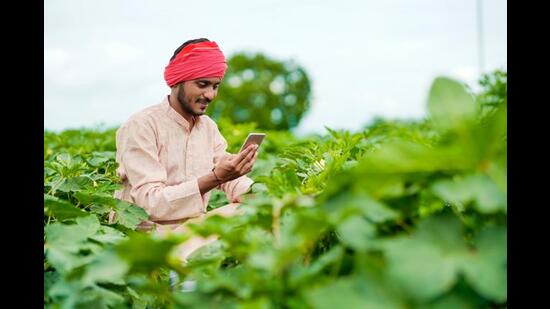
As of January 2020, about 400 million Indians used social media sites, an increase of 48 per cent from just nine months earlier, according to the Digital 2020: India report from We Are Social and Hootsuite. About 29 per cent of the country’s population used social media at least once a month, the report said. The average user has about ten different social media accounts and spends about two hours and twenty-four minutes on them each day. YouTube was the most popular site, the report found, although Facebook and its WhatsApp chat platform both followed closely behind
YouTube’s popularity should come as no surprise, given the growth of smartphones and data connections in India. As of December 2019, roughly 75 per cent of all the web pages served to browsers in India went to mobile phones, according to the Digital 2020: India report. While the report didn’t note as much, it’s likely that an even greater share of social media activity went through mobile phones as well. Whether uploading a quick video or watching a Bollywood classic, YouTube’s growth partly fed off consumers’ readily accessible smartphone screens and cameras. Songs and movies dominated YouTube search terms throughout 2019, the report said — a fact that fit well with my observations.

For example, my driver in Delhi regularly used YouTube on his phone to watch music videos or movies during my meetings, and he explained how he could save money by downloading movies overnight so that he didn’t have to burn his data usage during peak daytime periods.
I’ve found YouTube to be an indispensable link to Indian culture, like Netflix. Whether streaming yoga classes or watching the funny videos my siblings share with me, I find it to be one of the quickest and easiest ways to get a ‘dose of India’ in Texas. …
This kind of easy access, rich multimedia immersion and connection to people around the world will maintain YouTube’s popularity for years to come. Yet, in India, the increasing spread of smartphones and digital connectivity has had an even bigger impact on other apps. While YouTube was the second or third most-visited website in the country at the time, depending on which web research firm you consult, it did not rank among the top ten mobile phone apps by active users, according to App Annie’s State of Mobile 2021 report. Although video streaming services saw a surge in usage during the Covid-19 lockdowns, no app exemplified the reach and the democratization of mobile information sharing in India better than WhatsApp, which Facebook acquired in 2014.
Table 5.4: Top Ten Apps by Monthly Active Users (2020)
Mobile Phone App Name Company
WhatsApp Messenger Facebook
Facebook Facebook
TrueCaller Truecaller
Facebook Messenger Facebook
Amazon Amazon
Instagram Facebook
MX Player Times Group
Tez (now GPay) Google
Hindi Keyboard ClusterDev Technologies
Paytm One97 Communications
Source: App Annie, The State of Mobile 2021, available at https://www. appannie.com/en/go/state-of-mobile-2021/
Facebook keeps count of WhatsApp users close to the chest, but in 2019 a company spokesperson confirmed that the service had 400 million monthly active users in India alone — by far its largest market and roughly double its user base from two years prior. While some users have sought out alternative messaging apps due to privacy concerns, WhatsApp does not yet have a serious competitor in India… a big part of its popularity stems from the fact that people can use WhatsApp interfaces on almost any kind of mobile device. For example, WhatsApp developed a version compatible with KaiOS, a mobile operating system for feature phones that effectively transforms them into smartphones. KaiOS was preloaded on millions of JioPhones that sold in India, allowing Jio users to send texts, pictures, videos and voice messages, just as they could with WhatsApp on a smartphone. WhatsApp requires little more than a connection and a minimal data plan, and it’s free — all contributing reasons for its ubiquitous presence in India.

This widespread use has had some remarkable effects on Indian culture… The farmers and homemakers who grow and prepare food rarely have a formal education, so they pass down much of the country’s famed culinary traditions through spoken word, rather than written recipes. So WhatsApp developed a way for people to share and codify their knowledge. Mothers and daughters could exchange recipes on the app, perhaps through sound bites, photos or videos of the onions sizzling in a pan along with their written instructions. But WhatsApp didn’t just build a foodie community, it launched some commerce as well. Home cooks within the same apartment complex started buying and selling their sambars and vadas to each other. Farmers shared their agricultural knowledge with other farmers and then sent pictures of their ripe mangoes to potential buyers.
In fact, WhatsApp became an increasingly vital digital platform upon which technology startups and everyday small businesses could find, reach and build new markets. The same WhatsApp chat groups that link friends, families and hobbyists increasingly linked small-business owners, entrepreneurs and farmers as well. Users and entrepreneurs soon began to envision their own market opportunities in that massive user base. So WhatsApp moved quickly to position itself as a business-friendly platform, including with the 2018 launch of its WhatsApp Business service. Merchants could use a business account, also free, to create catalogues that highlighted their products and services and allowed them to connect directly with customers on WhatsApp. Meanwhile, WhatsApp Business would make money from companies that chose to integrate their systems directly with the platform, allowing merchants to send notifications and handle customer questions seamlessly, directly through WhatsApp itself.

The company’s new digital payments venture could take the innovation and digital commerce on its platform to a whole new level. The company officially launched WhatsApp Pay in India towards the end of 2020, as I was wrapping up work on this book, so its long-term impact remains to be seen. However, given its ease of use and the huge consumer and merchant communities on WhatsApp, I find it hard to imagine that the digital payments service won’t rapidly expand… Initially approved for up to 20 million users on India’s UPI, WhatsApp Pay will have to carve out space in an increasingly crowded and heated marketplace for digital payments and financial services.
For all the many benefits of WhatsApp and similar services, I would be remiss if I didn’t also note some of the dangers inherent in today’s social media platforms. Just as factions in the US used social media platforms to stoke divisions and violence, people have used WhatsApp to coordinate and foment mayhem in India. For example, as Covid-19 spread through the country in 2020, so did misinformation on WhatsApp about the disease and its treatment, including claims that rasam, a type of lentil soup, could cure the virus. While Facebook and other social media platforms also contend with ‘fake news’, the problem is particularly pernicious on WhatsApp because of one of the app’s chief draws — its privacy. Because it is encrypted from end-to-end, numerous invisible networks can freely circulate misinformation. Under pressure from the Indian government, WhatsApp has reined in some of the less savoury activities by limiting the size of chat groups, thereby reducing the number of forwarded messages and deleting suspicious or illicit accounts.

Best of Both Worlds: Merging the Digital and Analogue Experiences
I was reminded of the ways that technology is increasingly woven into the lives of successive generations during my 2018 visit to Delhi. Dan and I would dine at our hotel’s restaurant almost every evening after our days of interviews and market visits. For most of those dinners we had the same waiter, who would say that he’d served guests at the hotel for twenty-seven years. His wife was a schoolteacher. His daughter wanted to become a doctor and had just taken the entrance exam for medical school, and his son had started a production company and animation studio. One evening, after I’d told him about the work we were doing, he handed me his son’s business card. One of his projects included creating YouTube videos of his mother as she cooked some of the family’s favourite dishes. They called the show ‘Prem Ki Rasoi’— which may be translated as ‘Kitchen of Love’.
When I reflected on our conversation with the waiter and watched some of his son’s videos on YouTube, I was struck by the ways digital technologies could complement and extend the physical, real-world connections we build with our friends, family and community. Even as technology changes the way we live and communicate, the underlying messages we transmit through those digital bits and bytes remain very much the same. All mothers, wherever they are in the world, want what’s best for their children — whether they buy it in a small kirana shop or on a multinational e-commerce platform. But the more I thought about this reality, the more I realised that some of the most potent consumer market opportunities arise when old and new spheres intersect.
Enjoy unlimited digital access with HT Premium
Subscribe Now to continue reading

